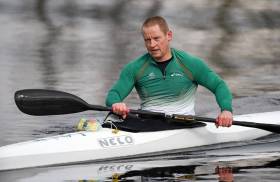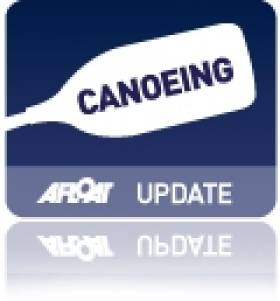Displaying items by tag: Paracanoe
#Canoeing: Patrick O’Leary won his B Final at Paracanoe World Championships in Duisburg this morning, placing 10th overall in KL3 200 and qualifying for the Paralympic Games. The Irishman, who was very close to taking an A Final place, beat Arsen Arsenovic of Serbia and Dylan Littlehales of Australia, who dead heated for second.
Canoe Sprint European Olympic Qualifier, Duisburg, Germany (Selected Results, Irish interest)
Men
K1 1,000 – Final: 1 Hungary (B Dombvári) 3 min 35.307, 2 Russia (R Anoshkin) 3:35.695; 4 M Fitzsimon 3:38.727.
Women
K1 500 – Final: 1 Germany (S Hering) 1 min 55.378, 2 Slovakia (M Kohlová) 1:55.677; 8 J Egan 2:00.270.
Paracanoe World Championships, Duisburg
Men - KL3 200 – B Final (Places 10-18): 1 P O’Leary 42.882 seconds.
O'Leary Fourth in World Cup Final in Duisburg
#CANOEING: Ireland’s Pat O’Leary had to settle for fourth at the Canoe Sprint World Cup in Duisburg, Germany today. The paracanoeist qualified for the final of the KL3 on Thursday. Germany’s Tom Kierey won, from Artem Voronkov of Russia and Britain’s Timothy Lodge – who was just .595 of a second ahead of O’Leary, who had also finished fourth at the European Championships earlier this month.
Canoe Sprint World Cup, Duisburg, Germany (Irish interest)
Men
Paracanoeing: KL3 200 – Final: 1 Germany (T Kierey) 41.305, 2 Russia (A Voronkov) 42.247, 3 Britain (T Lodge) 42.891; 4 Ireland (T O’Leary) 43.486.






























































